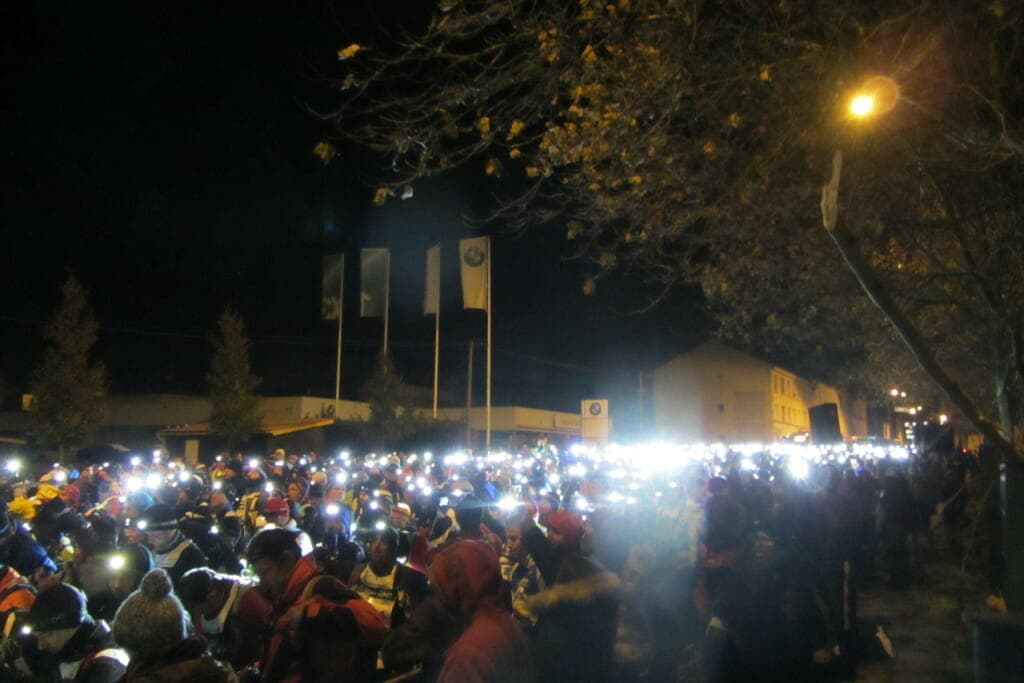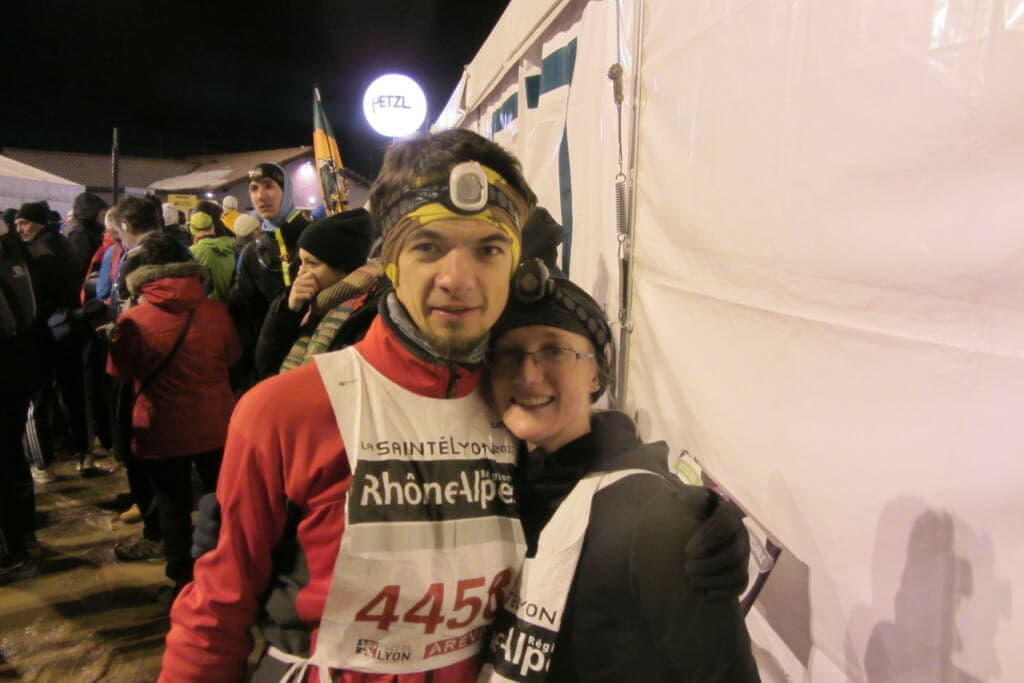
Winter Trail Racing in the Alps
Editor’s note: As we head into another summer season of trail running and trail racing in the Alps, Run the Alps’ Thom Fresneau takes a look back at a winter filled with some great trail running. In the Alps, races continue throughout the year, with some unique events during the wintery months. Here’s an overview of several notable races. Thanks Thom!
One great thing about living near the Alps is that the race season never really ends. For me, last winter started with the famous SaintéLyon, which takes place each year, on the first Saturday of December– starting at midnight!
The popularity of this 60-year-old race has grown dramatically over the last few decades and now gathers many thousands of runners. The course is a mix of road and trails, but do not let that mislead you – much of the terrain is often covered with snow and ice, making it trickier than most summer races. The main race involves running 70 km from St Etienne to Lyon (hence the “Sainté-Lyon”), but there are many other options including a relay race, which I ran with my partner Johanna and two other enthusiastic friends. The atmosphere that night was incredible. Hundreds of local families, both young and old, gathered around bonfires in their fields to cheer us on until the wee hours of the morning. A few times during the race I turned around to admire the long line of floating lights behind me. That’s not a view you get to see at your average everyday race!

The Trail de l’Aigle Blanc takes place in the middle of winter in the small Manigod ski resort, in Haute-Savoie, France. Compared to the SaintéLyon, this is a much smaller event, with only about 200 participants. There are also no roads; only pure, snow-covered trails, as well as steep climbs and slippery descents that follow the station’s ski slopes. The race starts in the evening and ends after nightfall, making it a tad trickier and, of course, more fun. This year’s was tough because of the warm conditions (more than 10°C at 6pm, at 1500 m of elevation!), which made the snow slushy and the terrain very unstable. As most local races, it ended with a festive dinner of traditional food (diots sausages cooked in wine sauce) served by the local villagers.
Once the weather starts to warm up, the number of races grows exponentially. In addition to the big spring events (such as the Maxi race in Annecy, France) there are many smaller, more intimate races usually organized by local runners and where everyone seems to know each other by name.

The Trail du Mont Musièges is a perfect example of one of these small, local events. This 20-km race takes you through wooded hills around the village of Musièges (between Annecy and Geneva). Because it’s a spring event, it often takes place in bad weather: rain, hail, snow, wind, you name it. This year the sun finally shone through for much of the morning, although the previous day’s rain made the trails very muddy and slippery. Unlike the well-supported Swiss events, local French races tend to require a bit more autonomy. There are fewer water stops and little to no signs indicating the distance you’ve travelled so far. This last point made my run particularly tough that day, as 5 km before the end, I thought I was almost done. Alas, it was not to be: another 300 meters of vertical climbing was waiting for me around the bend!
Last but not least, the Grimpée du Ruisseau is probably the most aesthetic race I’ve done this year– in that regard, I found it comparable to the Aletsch half marathon. The trail itself is not very technical, giving you time to admire the dramatic views of the Mont Blanc and the Aravis mountains instead of having to concentrate on your feet all the time. The short distance (15 km) and smoothness of the trail also makes it a very fast run. The finisher’s gift was a whole tomme de Savoie (a local cheese made of cows’ milk) – a nice change from the usual T-shirt – and of course the race ended with the traditional diots and polenta meal.